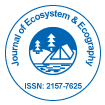Nosso grupo organiza mais de 3.000 Séries de conferências Eventos todos os anos nos EUA, Europa e outros países. Ásia com o apoio de mais 1.000 Sociedades e publica mais de 700 Acesso aberto Periódicos que contém mais de 50.000 personalidades eminentes, cientistas de renome como membros do conselho editorial.
Periódicos de acesso aberto ganhando mais leitores e citações
700 periódicos e 15 milhões de leitores Cada periódico está obtendo mais de 25.000 leitores
Indexado em
- Índice de Fonte CAS (CASSI)
- Índice Copérnico
- Google Scholar
- Sherpa Romeu
- Acesso Online à Pesquisa no Meio Ambiente (OARE)
- Abra o portão J
- Genâmica JournalSeek
- Diretório de Periódicos de Ulrich
- Acesso à Pesquisa Online Global em Agricultura (AGORA)
- Biblioteca de Periódicos Eletrônicos
- RefSeek
- Universidade Hamdard
- EBSCO AZ
- OCLC – WorldCat
- Catálogo online SWB
- Biblioteca Virtual de Biologia (vifabio)
- Publons
- Fundação de Genebra para Educação e Pesquisa Médica
- Euro Pub
Links Úteis
Diários de acesso aberto
Compartilhe esta página
Abstrato
The Dilemma of Plant Knowledge and Compensation for Native People Living in Brazilian Biomes
Clovis José Fernandes de Oliveira Júnior, Priscila Pereira Cabreira and Alpina Begossi
Background: Biological diversity is considered a key element for well-being and for a sustainable world. Although only a small portion of the world´s biological diversity has been studied, its capacity to generate socioeconomic benefits has been recognised everywhere. Local knowledge is a useful resource for the development of medicinal drugs and other substances. For this reason, the rights to areas with high biodiversity have been an area of debate and of legislative initiatives by the Brazilian government.
Methods: A bibliographic review was performed concerning scientific papers and gray literature. The data were organised into scientific and folk names, botanical family, economic use, part used, community, municipality, state, region, biome and others. The categories considered here were food, medicine, manufacturing, construction, energy, rituals, and ornamentation. A consensus value was calculated based on the agreement among the responses of the respondents.
Results: In this paper, we describe a method that could yield viable returns from the use of local knowledge to local populations by showing that plant knowledge and its use by local people in high-biodiversity areas are more local than diffused. We found that the plants used are not only different in each biome but, more importantly, that most of the knowledge of uses comes from different communities. A total of 195 plant families were cited in the 45 studies, including 2,058 species cited as used by local populations. The main families cited were Asteraceae, Lamiaceae, Fabaceae, Myrtaceae and Euphorbiaceae.
Conclusions: This study identified many species used by local populations. That many of these species have a ‘rare’ use (used by a few communities) makes property rights returns more feasible. The necessity of sharing the benefits of this biodiversity with native populations must be addressed in the environmental politics of Brazil, and the sharing of benefits is a solution that would help create a better integration between native populations and scientific endeavours.
Diários por Assunto
- Agro e Aquicultura
- Alimentação e Nutrição
- Bioquímica
- Ciência da Computação
- Ciência de materiais
- Ciencias ambientais
- Ciências Clínicas
- Ciências Farmacêuticas
- Ciências gerais
- Ciências Médicas
- Ciências Sociais e Políticas
- Ciências veterinarias
- Economia e Contabilidade
- Enfermagem e cuidados de saúde
- Engenharia
- Engenheiro químico
- Física
- Genética e Biologia Molecular
- Geologia e Ciências da Terra
- Gestão de negócios
- Imunologia e Microbiologia
- Informática
- Matemática
- Química
Revistas clínicas e médicas
- Anestesiologia
- Assistência médica
- Biologia molecular
- Cardiologia
- Cirurgia
- Dermatologia
- Diabetes e Endocrinologia
- Doenças infecciosas
- Enfermagem
- Fisioterapia e Reabilitação
- Gastroenterologia
- Genética
- Hematologia
- Imunologia
- Medicamento
- Medicina Reprodutiva
- Microbiologia
- Nefrologia
- Neurologia
- Odontologia
- Oftalmologia
- Oncologia
- Ortopedia
- Pediatria
- Pesquisa Clinica
- Pneumologia
- Psiquiatria
- Toxicologia

 English
English  Spanish
Spanish  Chinese
Chinese  Russian
Russian  German
German  French
French  Japanese
Japanese  Hindi
Hindi